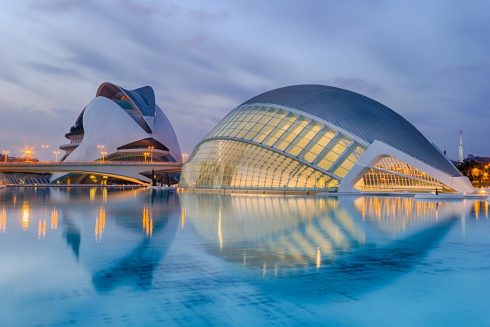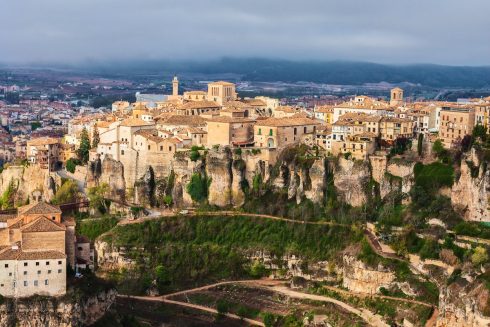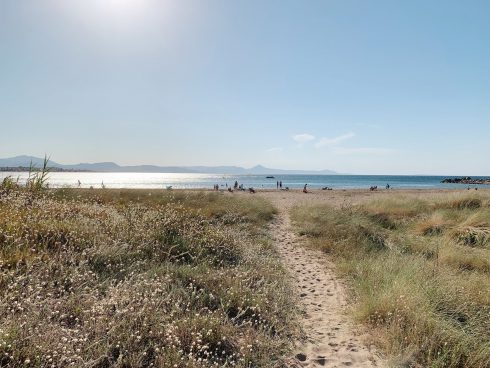IT was one event not to be missed. The Cure playing a free concert at the not-long finished City of Arts and Sciences. It was March, 2008, and well worth the drive up from Malaga to see one of my favourite British bands fill up a section of one of Europe’s most expensive architectural masterpieces.
The final sections (mostly the bridges) of Valencia’s mega-site had just been finished and the controversial project was said to have been four times over budget and costing €1.2 billion, or about ten times the price of Bilbao’s amazing Guggenheim museum.
I had seen photos but I wanted to see with my own eyes how Spain’s architect Santiago Calatrava – coincidentally best known for his bridges – had converted the banks of the old Turia river that once skirted Valencia’s centre. Could the city really justify that huge cost?
Having seen it then and returned again recently, I would give it a resounding ‘yes’.
The giant collection of surreal buildings that give a space-age look to one edge of the city have put Valencia very much on the map.
Just like the celebrated Guggenheim effect revolutionised the run-down northern Basque city of Bilbao, Calatrava’s swooping lines of white concrete and glass have created an addictive unworldly creation that is definitely the city’s unique selling point today.
It has changed the city’s skyline and created a wonderful counterpoint to the surprisingly impressive historic centre, which itself is also full of medieval gems.
Yes, there is still some work to do in uniting the two cities, as local expat architect Kevin Cash wrote in the Olive Press last year, but I believe the prize is there for the taking.
Tourists who brought in €314 million for the city in 2018 are set to start flying in again in their droves… and Valencia has in that one complex, a feature that can’t compete with anything else in Spain, except maybe Bilbao.
Yes, Aviles, in Asturias, has its Oscar Niemeyer Cultural Centre and yes, Sevilla has its Setas (also controversial), but nothing comes near to the sheer impact and scale of the City of Arts.
I particularly like the use of water, which reflects the otherworldly creations and the way the former riverbed area is incorporated into the overall design. It is easy to spend an hour sitting and marvelling at the curving lines interjected by arches and cross beams, marvelling at its scale as cyclists zip by or a lorry unloads its wares.

Each of the half dozen buildings have their own flavour. The Palau de les Arts ?dominates the skyline with its jutting silhouette, while the ?L’Hemisfèric is like a reptile’s eye, lurking half underwater. The Oceanographic aquarium has a life of its very own, while the mussel-shaped Agora is finally entering the fray.
I also like the way you can meander up the shady riverbed from this magical collection of buildings towards the Ciutat Vella, which is crammed full of charming squares and equally alluring buildings with most of the streets traffic-free.
Indeed, for the City of Arts to be a true success the vast bulk of tourists need to be pulled into the casco historico to understand how cleverly designed the original medieval footprint of Valencia was and how well it has aged today.
Like chalk and cheese, it is the contrast between the old and new that helps to make Valencia one of Spain’s most exciting places to visit this year.
READ ALSO:
- Why Valencia should be on every traveller’s bucket list when visiting Spain
- How Spain’s Valencia region has become a coastal paradise for wine lovers
- Valencia: How Spain’s third city transformed into a beacon for ‘smart and sustainable’ living
Click here to read more Valencian Community News from The Olive Press.









